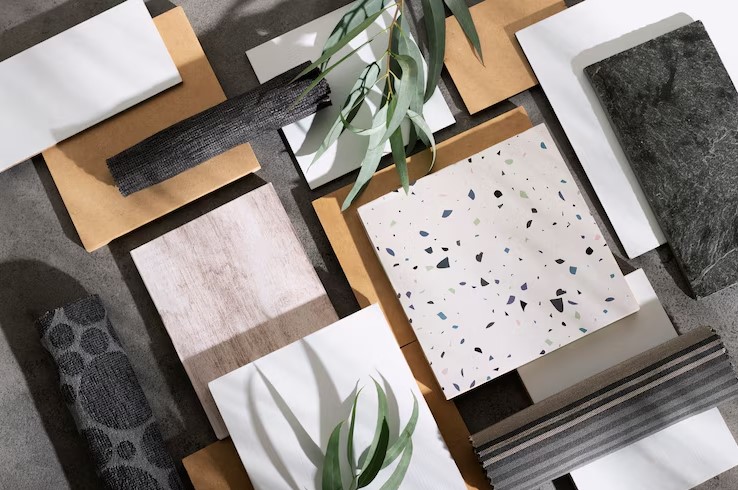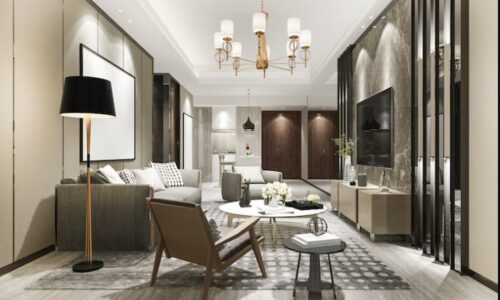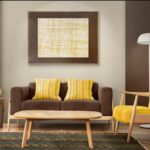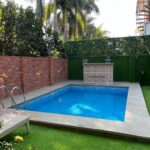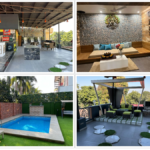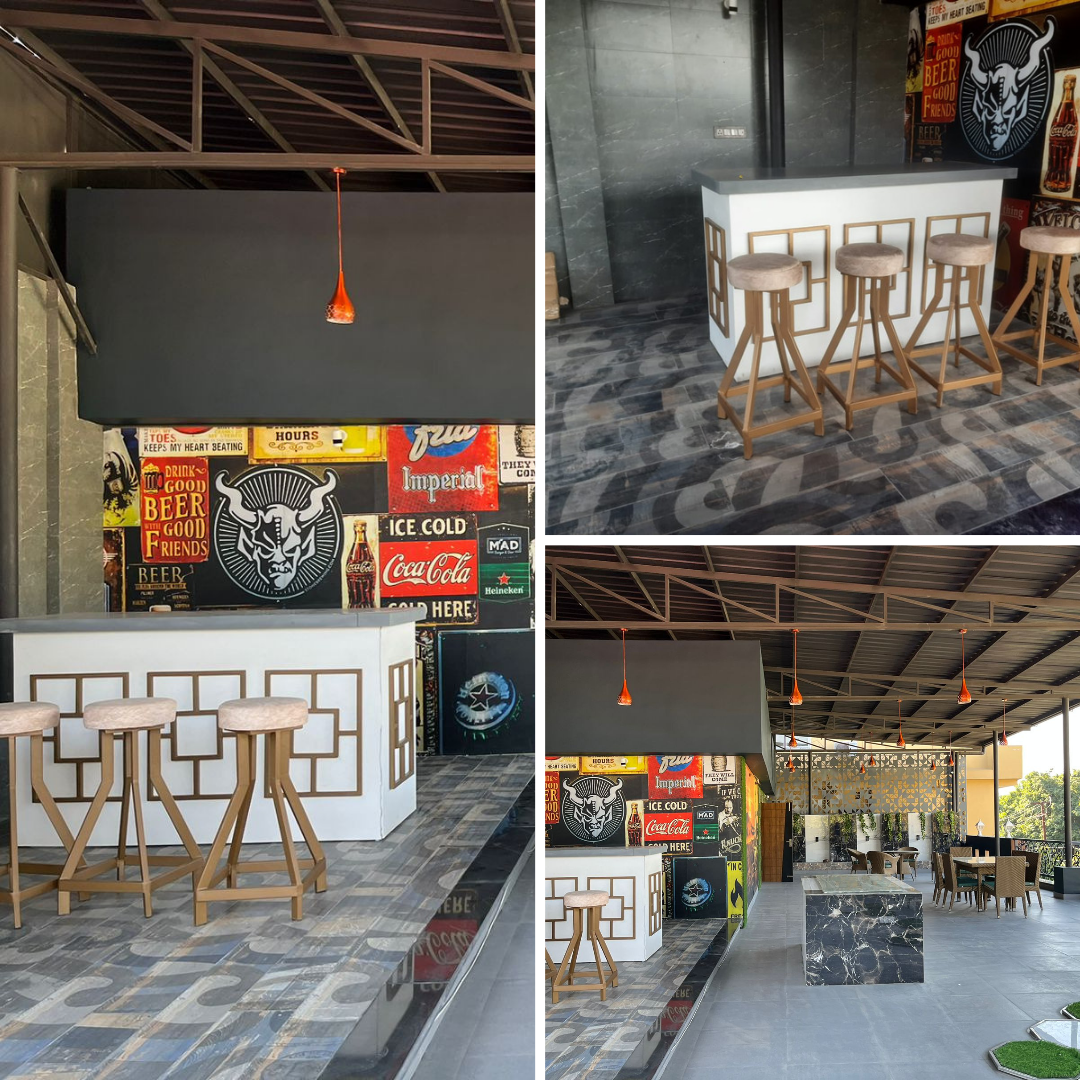A mood board is a visual tool used in interior design to collect and organize ideas, colors, materials, and styles. It’s a kind of collage made from photos, fabric samples, color swatches, textures, furniture pictures, and other elements that represent the look and feel of a space.
Think of a mood board as a “vision board” for a room or house. It helps bring different ideas together and shows how they might look in the real world. Whether you’re planning a full home renovation or just updating a bedroom, a mood board can give you a clear direction.
Why Is a Mood Board Important in Interior Design?
Mood boards are very helpful for many reasons:
-
Helps to Organize Ideas: If you have many design inspirations, a mood board lets you collect everything in one place.
-
Shows the Overall Theme: A mood board reflects the style you want — whether it’s modern, rustic, minimalist, or traditional.
-
Saves Time and Mistakes: It helps avoid buying items that don’t match or fit together.
-
Improves Communication: Designers and clients can both understand and agree on the concept using a mood board.
How Does a Mood Board Look?
A mood board can be physical or digital.
-
Physical Mood Boards: These are boards where actual fabric samples, paint swatches, magazine cutouts, and material pieces are glued or pinned.
-
Digital Mood Boards: These are created using tools like Canva, Pinterest, or Photoshop. They are easy to edit and share online.
Here’s a quick comparison between the two types:
| Feature | Physical Mood Board | Digital Mood Board |
|---|---|---|
| Materials Used | Real samples, printed images | Online images, design tools |
| Flexibility | Hard to change | Easy to edit |
| Sharing | Not easy to share | Easy to send via email or link |
| Cost | May require printing or buying | Usually low or no cost |
| Texture & Feel | Shows real materials | Can’t feel texture digitally |
What Is Included in a Mood Board?
A mood board can include many elements, depending on what you’re designing. Here are some common things you might find on an interior design mood board:
-
Color Palette: This is a selection of 3–6 main colors that will be used in the space. For example, light grey, white, and blue.
-
Textures: Materials like wood, metal, fabric, or stone to show how the space will feel.
-
Furniture Photos: Pictures of sofas, tables, chairs, and beds.
-
Lighting Ideas: Lamps, ceiling lights, or wall sconces.
-
Inspiration Images: Rooms or styles that show what you want the final space to look like.
-
Decor Items: Rugs, cushions, vases, curtains, and wall art.
-
Flooring Samples: Images or samples of tiles, wooden floors, or carpets.
Each of these parts helps build the full picture of the room before anything is purchased or built.
Who Uses Mood Boards?
Mood boards are used by many people in the design world. Some of them include:
-
Interior Designers: They use it to present design ideas to clients.
-
Homeowners: People who want to decorate their home use it to plan and collect ideas.
-
Architects: To help match the space structure with the interior style.
-
Product Designers: Even people designing furniture or lighting use mood boards for planning.
How to Create a Mood Board?
Creating a mood board is easy and fun. Here are the steps:
1. Choose a Theme or Style
Decide what kind of space you want — modern, boho, coastal, or vintage? This is your starting point.
2. Pick a Color Scheme
Choose your main colors. Use tools like Coolors or Pinterest for inspiration.
3. Collect Visuals
Find images online or from magazines that match your style. You can also gather real samples if you’re making a physical board.
4. Arrange Your Elements
Start placing the items together. Try to balance colors, textures, and objects. Make sure everything works together visually.
5. Review and Edit
Look at your mood board as a whole. Does it reflect what you want? Remove anything that feels out of place.
Benefits of Using Mood Boards
Let’s go deeper into the reasons why mood boards are helpful.
Better Visualization
Mood boards help you see the space before it’s built. You can imagine how the colors, textures, and furniture will look together. It prevents surprises or disappointments.
Saves Money
By seeing everything together first, you can avoid buying items that won’t match. It helps you stay on budget.
Helps with Decisions
Choosing from many styles and items can be confusing. A mood board helps you decide what fits best with your vision.
Improves Designer-Client Communication
If you’re working with a designer, a mood board makes it easier to share your ideas clearly. It avoids confusion and helps both sides stay on the same page.
Where Can You Find Mood Board Inspiration?
There are many websites and platforms where you can find inspiration:
-
Pinterest – Search for “living room mood board” or “bedroom decor ideas.”
-
Canva – Offers free templates to build digital mood boards.
-
Instagram – Many designers post mood board images and room ideas.
-
Wikipedia – Explains the history and use of mood boards.
-
Interior design – Gives broader knowledge on design concepts.
Mood Board vs. Style Board: What’s the Difference?
Some people confuse mood boards with style boards. While they are similar, they are not the same.
-
Mood Board: Focuses on the overall emotion, feeling, and atmosphere.
-
Style Board: Is more detailed and shows actual products, prices, and placements.
You often start with a mood board to get the idea and then move to a style board to finalize what to buy and where to put it.
Final Thoughts
A mood board is more than just a collection of pretty images. It’s a powerful design tool that helps bring your dream space to life. Whether you’re decorating your first apartment or planning a full home makeover, starting with a mood board gives you a strong foundation.
It helps you plan better, stay focused, avoid mistakes, and feel confident in your design choices. Plus, it’s fun and creative! So next time you start a new interior project, take the time to create a mood board. It’s a simple step that makes a big difference.
Also Read:
- Office Design Planning in 2025: How to Create a Space That Works
- Is Interior Design a Good Career in India?
- Does Interior Design Include Furniture?
- Modular Office Furniture: Designing Agile Workspaces for 2025 and Beyond
Frequently Asked Questions
1. What is a mood board in interior design?
A mood board is a visual tool used to collect and organize interior design ideas. It includes colors, textures, furniture, and more. It helps show the overall look and feel of a room before starting the actual work. Designers and homeowners use it to plan better and avoid confusion.
2. Why do designers use mood boards?
Designers use mood boards to organize their thoughts and share design ideas with clients. It helps them show the theme, colors, and style clearly. This avoids mistakes and saves time. Mood boards also help clients see what the finished space might look like before anything is done.
3. What are the types of mood boards used?
There are two types: physical and digital. Physical boards use real samples and magazine cutouts. Digital boards are made with online tools like Canva or Pinterest. Both help plan the design, but digital boards are easier to change and share with others through email or online links.
4. What items go into a mood board?
Mood boards can include color palettes, photos of furniture, textures like wood or fabric, lighting ideas, and decoration samples. They may also show flooring, wall paint, or style inspiration. All of these help give a clear vision of what the space will look and feel like.
5. Can I make a mood board without a designer?
Yes, anyone can make a mood board! You don’t need to be a professional designer. Just collect your favorite design ideas, colors, and furniture photos. Then, arrange them on a board or use a website like Canva or Pinterest. It’s fun and helps guide your home makeover easily.

